Prototyping VR Games with Team Future
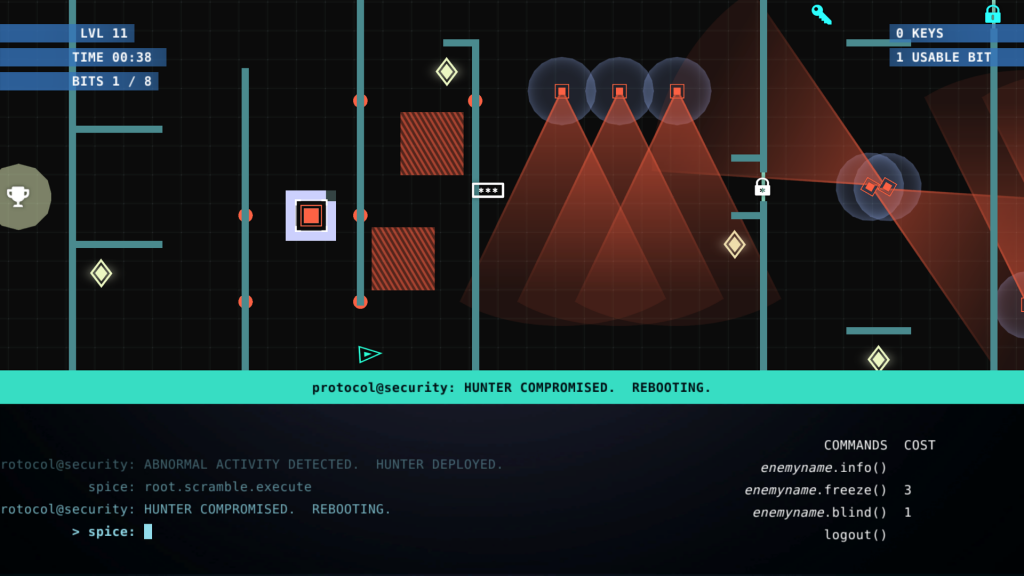
Around the time Oculus Rift completed its Kickstarter, I brought my virtual reality headset to a weekend hackathon called the Global Game Jam. Over 48 hours, my team and I built a game prototype where one player navigates his way through a maze, while a second player types instructions to him. The prototype was pretty simple—thrown together in 48 hours, after all—but people had a blast playing it. So a few friends and I decided to build it into something bigger. Over the past three years, we’ve worked nights and weekends to create Black Hat Cooperative, a multiplayer stealth game. We just launched this June on Oculus and Steam, and today our game is one of the highest rated experiences on the Oculus Store.
Here’s how we went from a hacked-together prototype to a popular game.

Idea Seed
Our initial inspiration for the game came from “The Matrix.” There’s a scene in the beginning of the movie where the hero, Neo, gets a call from a mysterious stranger. “They're coming for you, Neo, and I don't know what they're going to do.” It’s Morpheus, who warns Neo that there are dangerous agents who are hunting him down. He then gives Neo directions to help him escape.

Our game works the same way. Player one runs around in a 3D VR maze, and player two sees a map and types out instructions for player one to follow. By making the communication of asymmetric experiences our key game mechanic, people can enjoy the experience together. This is important because VR is an immersive medium, but it can be socially isolating.
Refining the Game
Since each of the players sees a different screen (one in 3D and one in 2D), we tried my best to play to the strengths of each medium. VR is great at immersive and suspenseful experiences, so the VR player is the player of action, sneaking around to get treasure and running like hell to escape from enemy agents. A screen is great at showing flat data, and the player who sees it has access to a keyboard. So the hacker player sees a very detailed map and types to control everything.
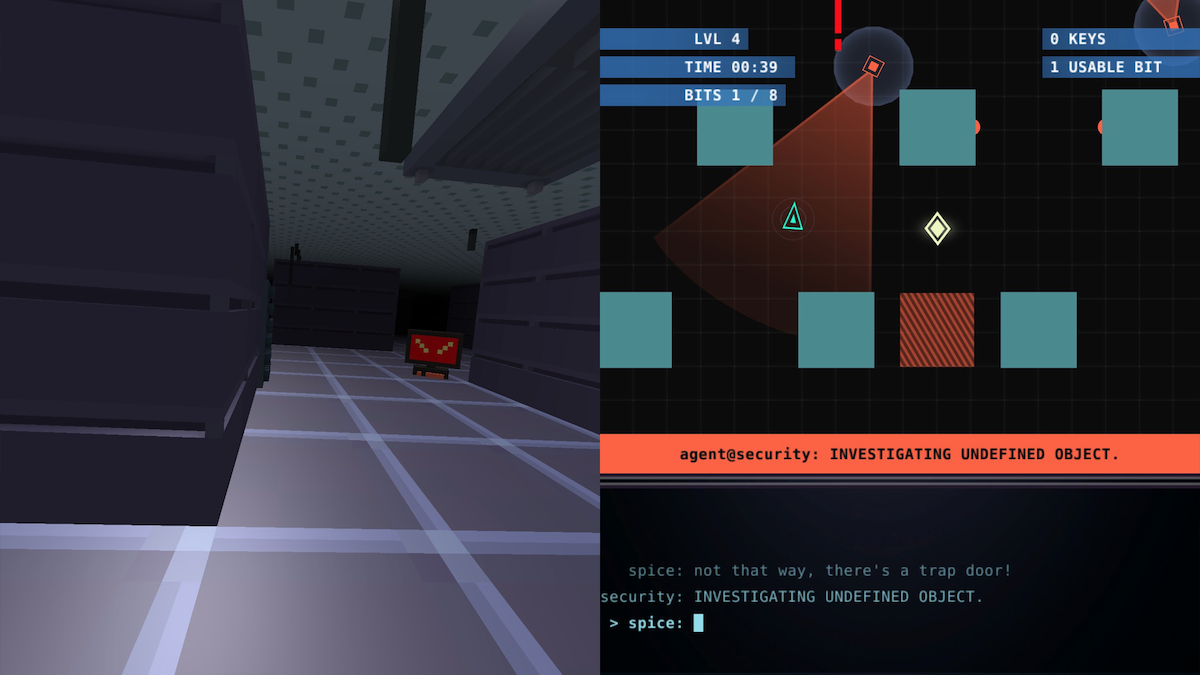
Cooperation is critical to this game. We designed it be impossible to win by yourself—unless you cheat by looking at both screens. The VR player determines where the game goes, but there are agents around the corner that only the hacker can see, as well as hidden trap doors and lasers. On the screen below, the VR player is blocked by a door. But there’s a password that they can give the hacker player to unlock it.
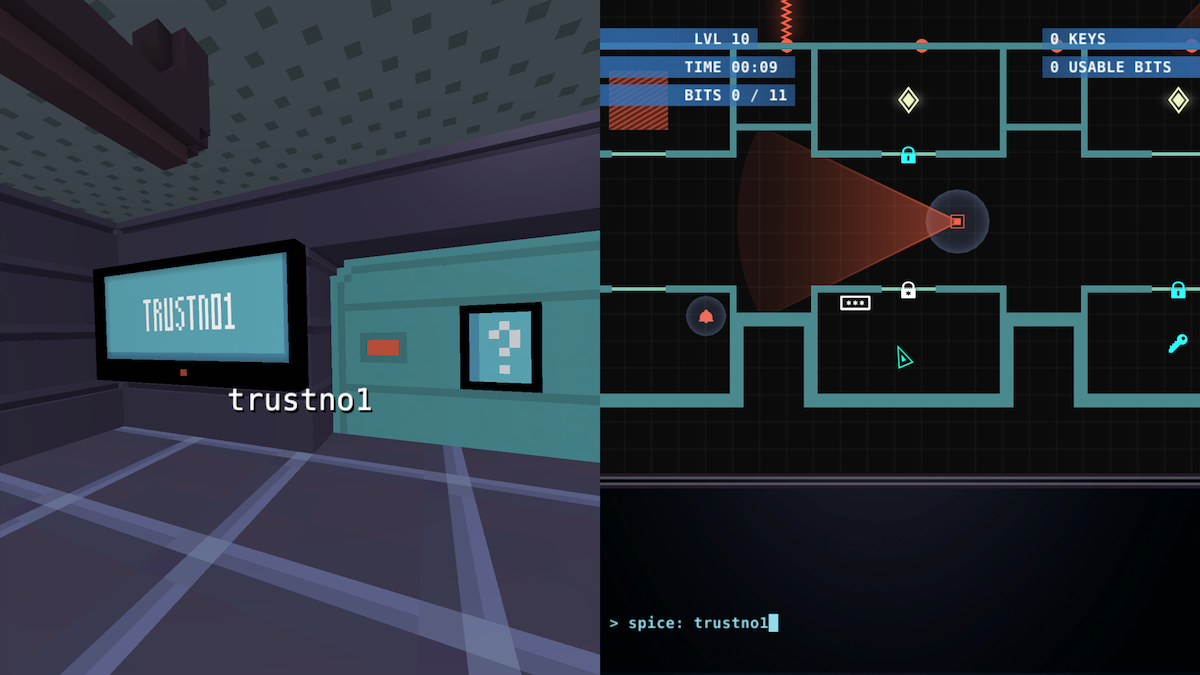
There’s also a mechanic for the VR player to scan enemies and gather “bits,” the diamond-looking things, which are used to purchase bonus abilities like freezing or blinding enemies. This spices things up, so they have more agency in the game.

Design Tools
Part of designing something well is also designing how you work. With a team of four, we didn’t have the time to carefully craft every aspect of the game. So Mark, the developer, and I made a modular level building kit in Unity that allows people to build a level in just a few minutes. Everyone on the team could pitch in to create VR content. We’re in the process of preparing these tools for Steam Workshop, a website that allows developers to release game creation tools to the greater gaming community.
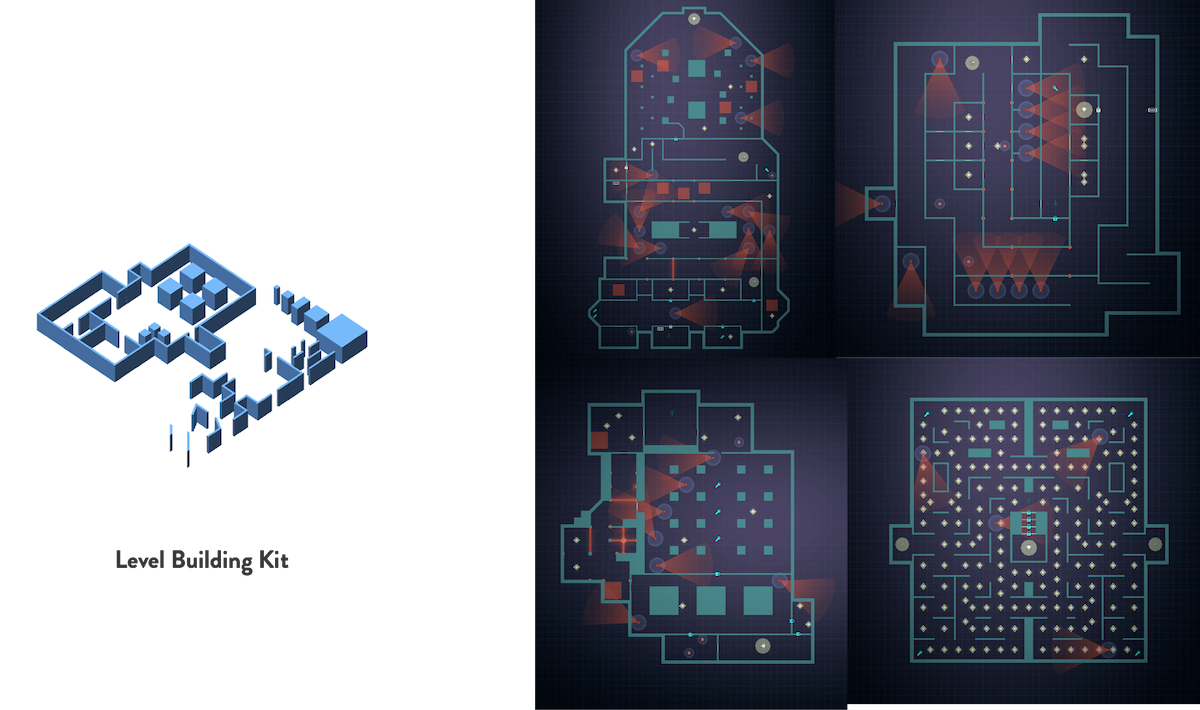
Our art pipeline got pretty crazy. I made the 2D assets in Illustrator so that I could avoid fussing with the resolution. For 3D assets, I made pixel sketches in Photoshop, turned them into 3D voxel art using Qubicle, played with the textures in Maya, and transferred models to Unity using Picavoxel. Finally, I set up prefabs in Unity so that I could easily swap the art in and out. The process allowed me to quickly pump out consistent and professional art, and instantly test it out in VR—a huge help for a solo artist.
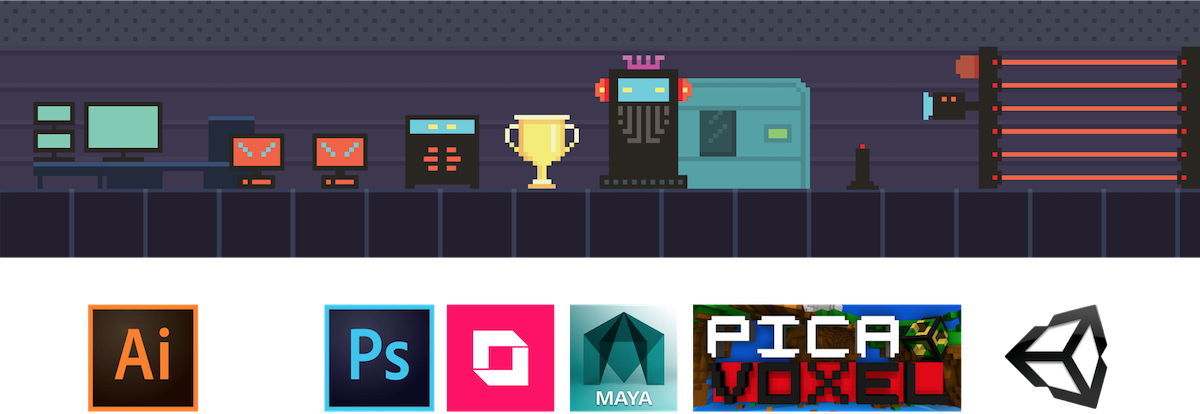
Key Tips for Would-Be VR Designers
This process wasn’t always easy. Here are some important things to keep in mind as you work on your own games.
- VR is not 2D. Or even 3D. I’ve done a ton of 2D and 3D design before, but VR is nothing like it. I had to develop entirely new design processes, and it was critical to test the game over and over again inside VR to get things just right.
- Details matter, even for a baseline experience. If 2D UI just a little bit off, it looks funny. Misplace VR UI and people throw up. Getting everything right—from careful sizing of the environment to UI placement to 3D audio cues—is critical.
- Offer alternative control schemes. This was a tough lesson. When we initially launched, we had a firestorm of complaints because we only had the default control scheme. We had to scramble to create a snap turn comfort mode and a teleportation mode.
- Test in VR. Some of our biggest missteps happened because we had ideas that we didn’t test quickly enough.I foolishly made the controls more complicated than they needed to be. Since players have VR headsets covering their eyes, we had to constantly remind them about controller locations because they couldn’t see them.
- Allow the audience to engage. VR can become an amazing social experience when you let your players share the game.
Launching the Game
We’re pretty thrilled with we managed to put together. Here’s a quick video to show what it feels like in action.
In June, we finally launched the game on the Oculus Store and Steam. Over the past 5 months, we’ve sold more than 2300 units. We’re the fourth highest ranked game on the Oculus store. Give it a try—I’d love to hear what you think.
Words and art

Subscribe

.svg)







